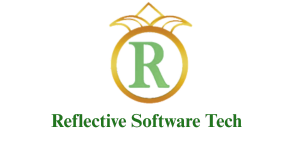
As the workplace continues to evolve post-pandemic, hybrid work models have become the new norm. Blending remote and in-office work offers flexibility, boosts productivity, and improves employee satisfaction. However, it also presents new challenges for HR professionals, especially in retaining top talent.
Employee retention in a hybrid setting isn’t just about offering flexible work—it’s about creating a culture of trust, engagement, and support across all locations. This blog dives deep into five strategic HR approaches that can significantly improve employee retention in a hybrid work model, backed by real-world examples and actionable insights.
Why Employee Retention Matters More Than Ever
Employee retention is not just about reducing turnover; it directly impacts company culture, operational efficiency, and bottom-line profitability. According to Gallup, replacing an employee can cost up to twice their annual salary. With the hybrid model redefining workplace dynamics, retention becomes even more critical to maintaining stability and continuity.
Challenges in a Hybrid Work Environment
Before diving into the strategies, it’s important to understand the common challenges of hybrid work:
- Lack of face-to-face communication
- Reduced team cohesion and culture dilution
- Uneven opportunities for remote vs. in-office employees
- Burnout from blurred work-life boundaries
- Limited visibility into employee engagement and satisfaction
These challenges require innovative HR strategies to keep employees motivated, connected, and committed.
Strategy 1: Foster a Culture of Communication and Transparency
In a hybrid model, over-communication is better than under-communication. Transparent communication bridges the gap between remote and in-office workers and ensures that no one feels left out.
Actionable Tactics:
- Daily or weekly team check-ins via Zoom or Microsoft Teams.
- Monthly all-hands meetings to align everyone with company goals.
- Open-door virtual policy, where managers are available during specific hours.
- Feedback loops via surveys or anonymous platforms like Officevibe or TinyPulse.
Real-World Example:
At GitLab, a fully remote company, regular asynchronous updates, clear documentation, and open Slack channels create a transparent environment where employees feel informed and valued.
Key Takeaway:
Trust and engagement are built on consistent, transparent communication across all levels of the organization.
Strategy 2: Personalize Employee Experience and Benefits
In a hybrid environment, one-size-fits-all benefits no longer cut it. Employees have diverse needs depending on their work style, family responsibilities, and health concerns. Personalizing their work experience leads to stronger emotional commitment and retention.
Actionable Tactics:
- Customized benefit packages that include wellness stipends, ergonomic equipment, or child care support.
- Flexible work hours to accommodate different time zones or caregiving duties.
- Career pathing and growth plans tailored to individual goals.
Real-World Example:
Salesforce introduced the “Success from Anywhere” initiative, giving employees the freedom to choose how and where they work, along with tailored wellness programs.
Key Takeaway:
When employees feel like their individual needs are acknowledged, they’re more likely to stay loyal to the company.
Strategy 3: Invest in Learning and Development (L&D)
Career stagnation is one of the top reasons employees leave. Providing continuous learning opportunities, regardless of location, boosts morale and reinforces the company’s commitment to employee growth.
Actionable Tactics:
- Virtual training programs via platforms like Coursera, LinkedIn Learning, or Udemy.
- Monthly knowledge-sharing sessions hosted by internal experts.
- Leadership development programs for aspiring managers.
- Mentorship and coaching that transcends geographical boundaries.
Real-World Example:
Accenture provides over 24 million hours of training annually, with much of it accessible online, allowing hybrid employees to grow at their own pace.
Key Takeaway:
An investment in employee development is an investment in long-term retention.
Strategy 4: Promote Inclusion and Equal Opportunities
Hybrid work can unintentionally create a two-tier workforce—those in the office may be more visible than those working remotely. This can lead to biased promotions, recognition gaps, and eventually, attrition.
Actionable Tactics:
- Blind performance evaluations that focus on output rather than presence.
- Inclusive meeting practices, ensuring everyone—remote or in-person—has a voice.
- Equal access to leadership through virtual office hours and company-wide Q&A sessions.
- Diversity, Equity, and Inclusion (DEI) programs that are actionable and transparent.
Real-World Example:
Microsoft’s Hybrid Workplace Guide emphasizes equal opportunity by training managers on unconscious bias and monitoring career advancement patterns across remote and on-site staff.
Key Takeaway:
Equal treatment, visibility, and access to opportunities are fundamental for retaining hybrid employees.
Strategy 5: Measure Engagement and Act on Feedback
You can’t improve what you don’t measure. Regularly gauging employee sentiment helps HR identify red flags early and make data-driven decisions to boost retention.
Actionable Tactics:
- Quarterly engagement surveys with measurable KPIs.
- Pulse checks during major organizational changes or policy updates.
- Exit interviews and stay interviews to understand motivations.
- People analytics platforms to visualize and predict turnover trends.
Real-World Example:
Spotify uses regular surveys and a data-driven approach to adapt its policies, from work-from-anywhere options to mental health support, based on employee feedback.
Key Takeaway:
Retention strategies must be dynamic and guided by real-time employee data.
Supporting Technologies That Help
To implement the above strategies effectively, companies should invest in digital tools such as:
- Slack / Microsoft Teams for communication
- BambooHR / Gusto for employee management
- Lattice / 15Five for performance reviews and feedback
- Zoom / Google Meet for virtual collaboration
- Workday / SAP SuccessFactors for workforce analytics
These tools help bridge the digital divide in a hybrid setting.
Final Thoughts
Retaining employees in a hybrid work environment requires more than just flexibility—it demands a thoughtful, data-driven HR approach. Organizations must adapt by focusing on personalized experiences, consistent communication, equal opportunity, and continuous development.
HR professionals who lead with empathy, backed by smart strategies and digital tools, will be best positioned to build strong, loyal teams ready to thrive in the future of work.
Is your organization ready to improve retention in the hybrid era? Connect with Razegreen to build custom HR solutions that drive engagement, growth, and long-term success.
Stay tuned for our next blog: “Why Outsourcing HR Can Boost Efficiency for Small and Medium Enterprises.”
